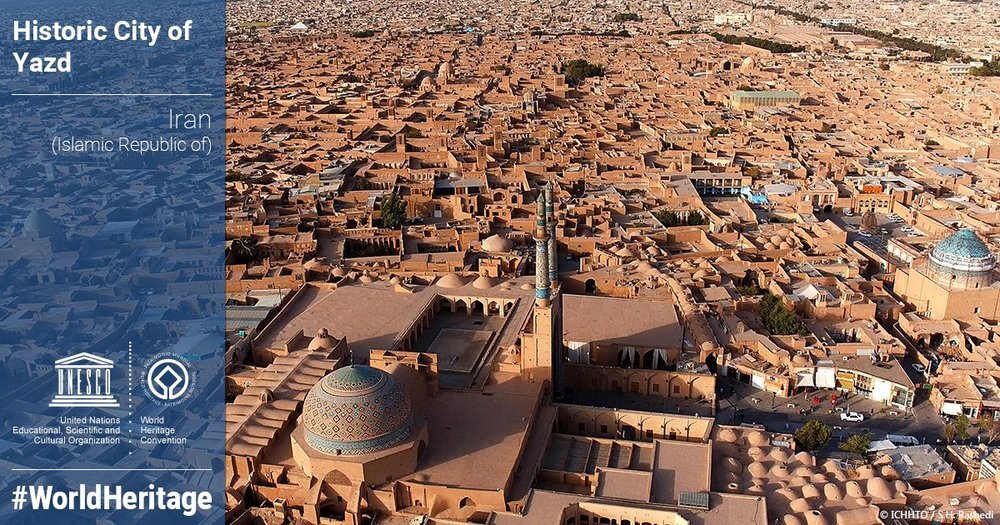Yazd celebrates sixth anniversary of its UNESCO registration

TEHRAN – A ceremony to commemorate the sixth anniversary of Yazd’s listing on the UNESCO World Heritage list was attended by hundreds of people on Saturday evening, including local officials, experts in cultural heritage, artists, travel insiders, and craftspeople.
The historical core of Yazd is full of mud houses, bazaars, public bathhouses, water cisterns, mosques, synagogues, Zoroastrian temples, and centuries-old gardens. From a divine point of view, the city enjoys the peaceful coexistence of three religions: Islam, Judaism, and Zoroastrianism.
Heritage experts believe that Yazd is a living testament to the intelligent use of the limited resources available in the desert for survival. Water is brought to the city through the ancient qanat system.
Each district of the city is built on a qanat and has a communal center. In addition, the use of earth in buildings includes walls and roofs through the construction of vaults and domes. Homes are built with underground courtyards that serve underground areas. Wind catchers, inner courtyards, and thick earth walls ensure a pleasant microclimate.
The man-made underground qanat system is based on snow-fed streams that flow down the foothills of the surrounding mountains. Yazd's earliest water supply is estimated to date from the Sassanid period (AD 224 to 651). However, many others have been continuously repaired and used over time, and most surviving ab-anbars (traditional mud-brick cisterns) today can be dated to the late Safavid and Qajar periods.
A top destination, the Yazd Water Museum is a must-see for anyone wanting to learn more about the brave men who built such underground aqueducts in the past. Housed in a restored manor house with a visible qanat running underneath, the museum offers visitors a fascinating insight into the hidden world of the qanats through a series of photographs, exhibitions, and architectural drawings. It represents almost 2000 years of unique irrigation structure that was in operation but also describes the drilling of mother wells and associated underground water networks that extended to the ancient city.
“The city of Yazd is located in the deserts of Iran close to the Spice and Silk Roads. It is a living testimony to intelligent use of limited available resources in the desert for survival,” the UN body wrote in its website.
“Partially covered alleyways together with streets, public squares and courtyards contribute to a pleasant urban quality. The city escaped the modernization trends that destroyed many traditional earthen cities.”
In July 2017, the historical core of Yazd was declared a UNESCO World Heritage Site. Yazd is consistently ranked as a wonderful place to stay or a destination not to be missed by almost all visitors. The city is full of adobe houses outfitted with innovative turrets (windcatchers), atmospheric narrow streets, and many Islamic and Iranian monuments that make up the striking cityscape.
AFM
